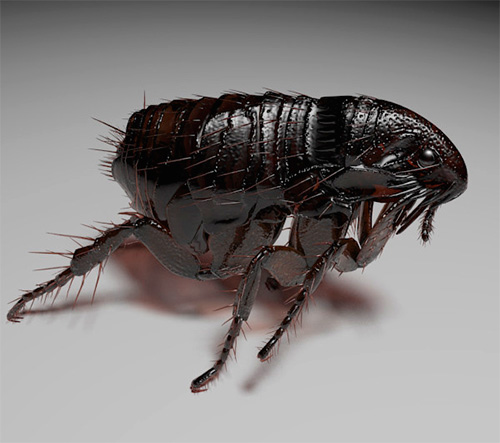
A small dark brown dot that instantly and almost imperceptibly disappears from the hand of the person who caught it. A hateful little vampire that causes painful bites and keeps your pet awake. Finally, the carrier of the most dangerous diseases is all she, a flea.
It seems that there can be nothing interesting in it - a tiny parasite, doing nothing but biting and sucking blood. But why did fleas become the subjects of research by many scientists from around the world? Why are amateur researchers looking at them with such interest through microscopes and taking amazing photos?
There is only one reason for this: fleas are not as simple as they seem to the layman at the first meeting ...
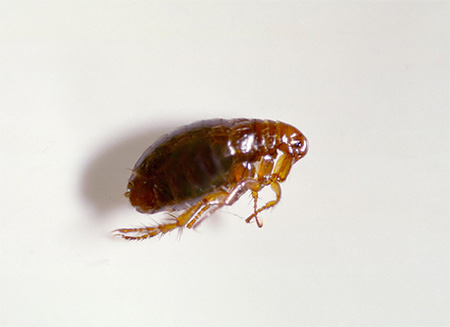
It is interesting
One of the most famous flea researchers was the British banker Charles Rothschild, a multimillionaire who devoted all his free time to entomology. It was he who described the southern rat flea, which was the cause of many epidemics of the plague, it was he who collected the most complete collection of these parasites, now stored in the British Museum. Ironically, Rothschild committed suicide because he suffered from encephalitis.And it is quite possible that he picked up this disease in one of his entomological expeditions.
A bit of biology
The flea is a parasite in many ways unique. As unique as it is demanding: fleas do not bite any animal other than warm-blooded birds and mammals. Only certain species are able to bite cold-blooded animals, but they do this only in exceptional cases.
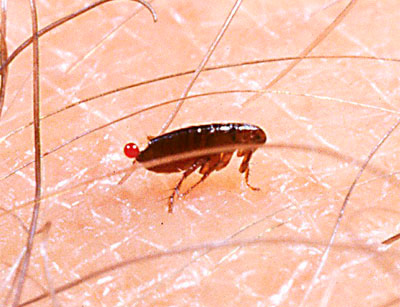
Of mammals, these insects prefer precisely those that are inclined to arrange nests and burrows for themselves. Such host habits are necessary for parasites: insects do not live on their host permanently, but only jump on it in order to suck blood. And of course, parasitizing on animals that are not tied to one place, they will run a great risk of not finding a victim during the next bout of hunger.
Therefore, fleas prefer to settle in rodent burrows, bird nests, dog kennels - here they are guaranteed to be able to count on a regular meal.
It is interesting
Among the huge number of flea species, there are only a few dozen (up to 30) of those that parasitize nomadic animals - ungulates, hares, cats - and therefore are constantly on their body so as not to lose their food source.
When a food source is available, fleas feed every day. But if necessary, they may well last several months without food. But after the expiration of such a fast, the parasite pounces on the victim with particular greed.
Thus, a person is a fairly suitable victim for fleas. Especially the person who prefers to live in unsanitary conditions.
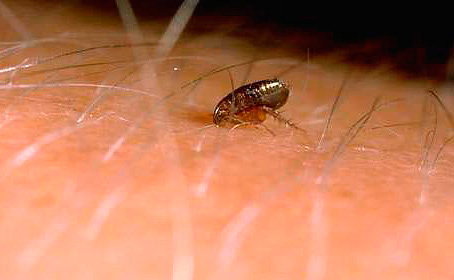
At the same time, depending on the type of flea, they can eat differently.Some are sucked for future use, so that they have undigested host blood in their excrement. They suck from 20 minutes to an hour. Others feed little and often, mainly those species that live in the nests of rodents and birds.
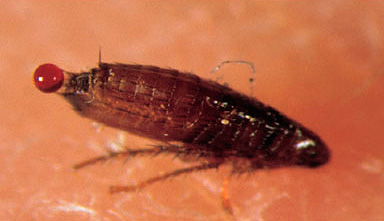
Most species of fleas are not attached to any one host: they can easily feed on the skin of various animals and birds. However, there are also fleas that feed only on the blood of one animal. They are usually obligate parasites of bats.
Fleas are distributed throughout the world. They are even in Antarctica, meeting in the nests of birds and at the local scientific stations. The optimal temperature for their habitat and reproduction is 18-27 ° C, but at the same time, fleas can withstand quite extreme temperatures, although they stop breeding at the same time.
It is interesting
The Glaciopsyllus antarcticus flea is the southernmost insect in the world. It has been found on Queen Maud Land and near the Antarctic stations of Davis and Mawson - no other known insect is found here. This insect parasitizes petrels and storm petrels, living in the nests of these birds during the warm period of the year, and wandering in their plumage over the ocean expanses in winter.
Appearance of fleas
Many people know what fleas look like, but not everyone has seen the parasite in such a magnification that it is possible to examine in detail the details of the physique of this small parasite.

If you look at a photo of a flea taken with a microscope, you can see that its body is very flattened from the sides and looks like it is crushed. This is an evolutionary adaptation to move easily among the hair or feathers of the host.
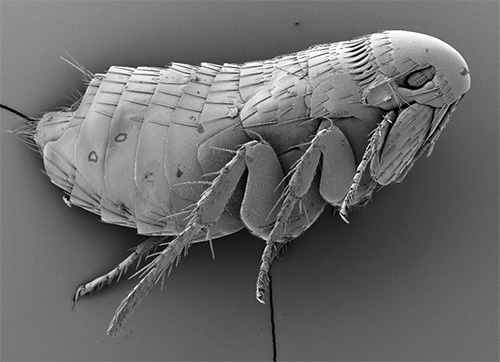
By the will of an evolutionary chance, this same feature of the insect's morphology helps it to be invulnerable when trying to comb out, gnaw or simply crush the parasite with your fingers. Indeed, a person can mechanically destroy a flea only by crushing it with a fingernail on a hard surface.
The photo below shows the same flea from the front and side: the difference in body proportions is clearly visible:


On a note
Interestingly, fossil fleas, whose age scientists date back 50 million years ago, look almost the same as modern ones. Apparently, for such a parasitic lifestyle, this body shape turned out to be optimal. For example, bedbugs and ticks also have a very flattened body, only in a different direction - from top to bottom.
Flea photo:
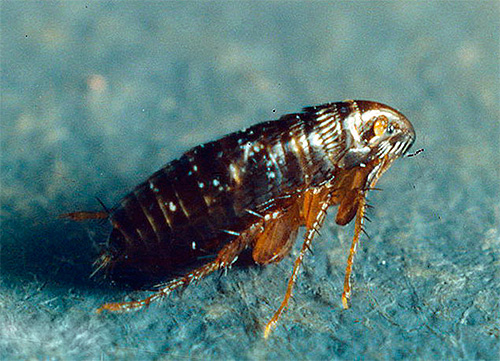
Photo of a bed bug (the body is flattened in a horizontal plane):
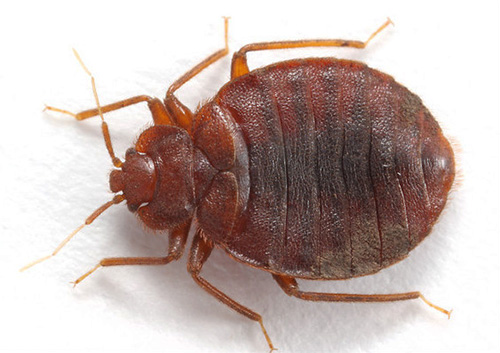
A characteristic feature of fleas are elongated hind legs. It is thanks to them that parasites are able to jump further than almost all other insects. When feeding or in a calm state, these legs are bent so that they do not create any inconvenience for the insect in moving. With outstretched legs, the flea looks very original - the photo below shows a dog flea under a microscope:

It is interesting
In relation to the distance of the jump to the length of the body, fleas are in second place among all insects: only one type of cicada makes longer jumps. With a body length of 2-3 mm, the flea jumps up to 19 cm in height and up to 30 cm in length - this is 100 times the length of its body. In order for a person to compete with a flea in the distance of a jump, he needs to jump at least 160 meters in length.
Long jumps for fleas are provided not only by strong hind legs, but also by a special hard shield on the chest.When the insect bends its hind legs, this shield is pulled back like a catapult lever. And when pushed, he is strongly thrown up, increasing the range of the jump.
On a note
Not all fleas can jump. There are those whose hind legs are of the usual length and which are constantly on the body of their master. And there is a species that uses earwigs as a means of transport to move between rodent burrows.
All fleas are wingless. Given their way of life, wings would be a hindrance for them to move in the owner's coat. Yes, and crushing a winged insect is generally easier than a wingless one. Evolution has decided that it is better for fleas to jump than to fly.
Fleas do not have a piercing proboscis, which other blood-sucking insects have - mosquitoes and bedbugs. But they also get by with their stiletto-like jaws: the upper jaws saw through the skin of the victim, and the lower jaws expand the wound to inject saliva into it.
True, the feeding parasite itself is forced to literally immerse its body into the wound in order to reach the blood vessel - in the photo you can clearly see what the insect looks like at this moment:
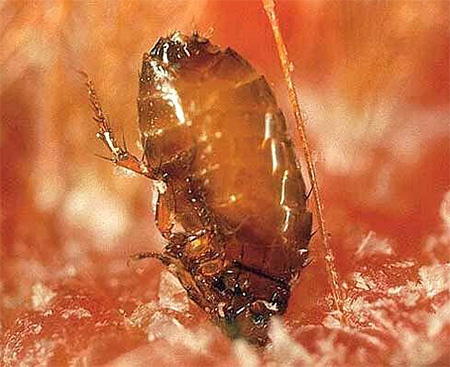
On a note
Unlike most blood-sucking parasites, fleas do not try to hide their bite at all and do not inject an anesthetic into the wound. At the same time, an enzyme contained in the saliva of an insect that prevents blood clotting causes severe itching and the appearance of hemorrhagic edema at the site of the bite. At the same time, the portion of such an irritating substance transmitted with one bite is negligible - only 0.000004 cubic mm.Such “arrogance” of fleas is due precisely to their body shape: a person practically cannot destroy an insect with his fingers, and therefore the parasite does not try to mask its bite at all.
The size of the body of fleas has become a byword: a flea is a household name for someone when they want to emphasize its small size.

Indeed, the largest fleas that parasitize moose barely reach a length of 10 mm. Usually fleas have a body length of 1-3 mm. Their larvae are about the same length, but they look completely different than adults.
Reproduction of fleas, the appearance of their eggs and larvae
Fleas are insects with complete metamorphosis. Their entire reproductive cycle looks like this:
- A well-fed female throws out a whole pack of eggs: a strong ejection of the eggs ensures a wider dispersion of them. The photo under the microscope shows several eggs - they are so small that it is very difficult to see them with the naked eye.

- After a few days, small white worm-like larvae emerge from the eggs, which burrow into the substrate on which the eggs lay. In most cases, this substrate is the litter in the host's nest. And it can also be an old dirty carpet in the house. The larvae feed on either rotting organic matter or blood residues in the excrement of adult fleas. As the larva grows, it molts several times, and after the third molt begins to surround itself with a thin silk cocoon, turning into a chrysalis.

- The pupa develops for several days, and a completely adult and ready for parasitism flea emerges from it. All that remains for her is to watch for the owner and continue the work of her parents.
In an ordinary apartment, flea larvae can quite successfully develop in floor cracks, behind baseboards, in old carpets - in general, where there is at least a little rotting debris.
The larva looks inconspicuous and at first glance looks like a simple little white worm. Only under a microscope in the photograph can one distinguish a clearly translucent filled stomach:

One female lays up to 450 eggs in her life, 10-15 per serving. For one "shot" she needs at least one good meal. But to work in the egg conveyor mode, the female only needs one intercourse with the male.
Photo of flea eggs:

Purely theoretically, a flea can live up to a year and a half, but in real conditions it barely reaches 2 months - its lifestyle is too dangerous, it has too many enemies.
Types of fleas and the differences between them
There are many types of fleas. Scientists number more than 2000 of them, each of which specializes mainly in parasitism on one species of animal or bird. An inexperienced observer is unlikely to find a difference in how they look, and will not distinguish, for example, a rabbit flea from a gopher flea. Specialists distinguish them by features that are not very striking even under a microscope.
For humans, the following types of fleas are most familiar:
- a human flea - indeed, there is such a thing. It is she who is immortalized in the paintings of medieval artists, and it is about her that they talk about when they describe fleas in literature.
- The cat flea holds the record for the number of human bites. It is small, very widespread and absolutely picky in choosing a host, eating well on dogs, cats, and people.
- The rat flea, the most dangerous, is an active carrier of the plague pathogen.
- The dog flea, relatively large and inactive, parasitizes most often on dogs.
And this list can be continued for a very, very long time: gopher, rabbit, elk, mouse - almost every genus of mammals has its own flea parasite.
In the photo below you can get acquainted with representatives of the most common species.
Photo of a human flea:
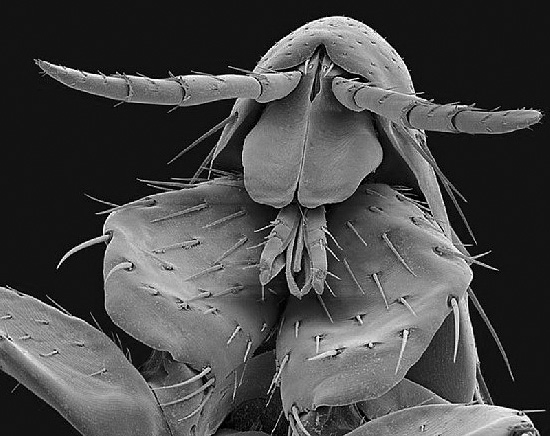
Photo of a cat flea:
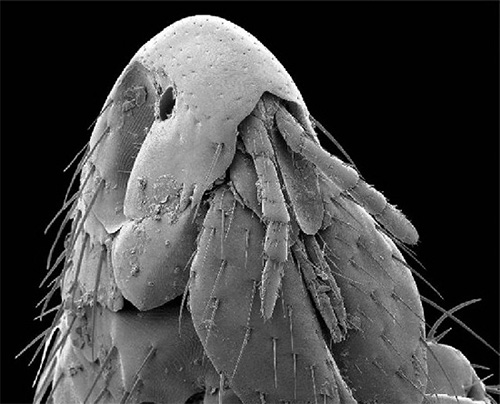
Photo of a dog flea:
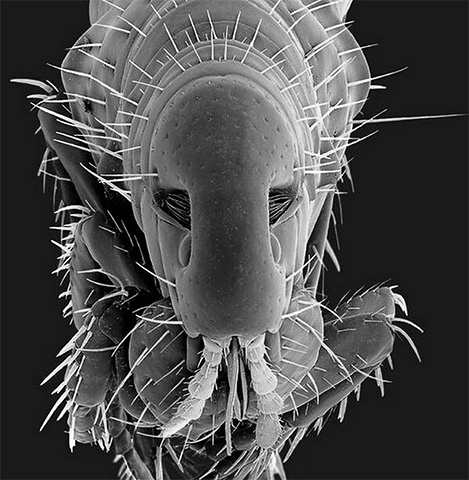
Fleas as carriers of dangerous diseases
If fleas were not carriers of deadly human diseases, people would not have shown such diligence in their destruction. But it was these insects, together with their immediate hosts - rats - that were the cause of the devastating epidemics of bubonic plague in Europe. And today, many populations of rodents - jerboas, ground squirrels, gerbils - are kept under strict control by epidemiologists, since a deadly pathogen continues to incubate in the burrows of these animals.
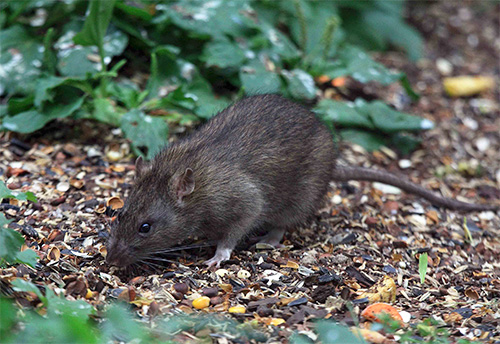
In addition to the plague pathogen, other bacilli and viruses also actively move on fleas:
- hepatitis A and B viruses
- salmonella
- brucellosis pathogen
- typhoid
- encephalitis virus
- trypanosomes
- eggs of various helminths.
In total, more than 200 diseases dangerous to humans can be carried by certain types of fleas. And therefore, flea bites are terrible not only with itching and redness ...
In general, it is not difficult to distinguish a flea from any other blood-sucking parasite: neither ticks nor bedbugs have such small sizes. And certainly none of the six-legged vampires has the ability to jump. It is only important for a flea to be seen on clothes and caught before it bites. And its identification is unlikely to become a serious problem.
Interesting video: cat fleas under a microscope


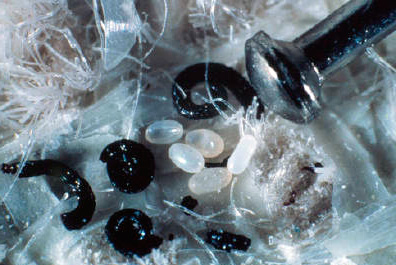
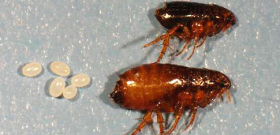
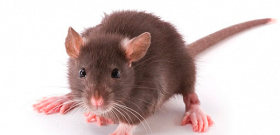
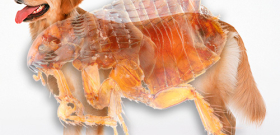
Here is a dog flea I just had to observe in due time. Fortunately, now my dog is already protected. I give him drops of Advantix from these parasites on the withers. The main thing is that this drug does not allow the insect to bite the dog, and just most drugs work through the bite.
How to get rid of them?
Here are the freaks these fleas ...